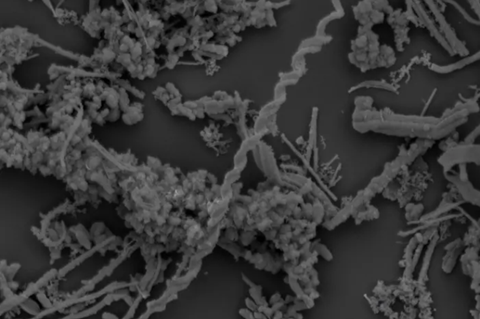A new study led by King Abdullah University of Science and Technology (KAUST; Saudi Arabia) Professor Alexandre Rosado has revealed an unusual microbial world in the Hatiba Mons hydrothermal vent fields of the central Red Sea, a site first discovered by one of his co-authors and colleagues, Assistant Professor Froukje M. van der Zwan.

To show this, the study delivers the first “genome-resolved” analysis of these hydrothermal systems, providing an unprecedented view into both the types of microbes present and the metabolic functions that sustain them.
READ MORE: Meet the Global Ambassadors: our Q&A with Alexandre S. Rosado
READ MORE: Tough microbes found in NASA cleanrooms hold clues to space survival and biotech
“Microbes from the Hatiba Mons fields show remarkable metabolic versatility,” said KAUST Ph.D. student and lead author of the study Sharifah Altalhi. “By understanding their functions, we can see how life shapes its environment, and how geology and biology are deeply intertwined in the Red Sea.”
Microbial iron mounds
The Hatiba Mons fields were first documented in 2023 by a KAUST–GEOMAR collaborative expedition, which uncovered low-temperature venting zones and towering iron-oxide mounds between 778 and 1,450 meters deep. These microbial iron mounds mark the largest known active low-temperature iron-oxyhydroxide vent system in the world.
Building on that discovery, the new study used genome-resolved metagenomics to reconstruct more than 300 microbial genomes from five vent sites across the Hatiba Mons complex, capturing an ecosystem unlike any other known vent field.
Unlike traditional genetic surveys that only reveal which microbes are present, genome-resolved analysis further enables scientists to determine how these microbes function to survive and contribute to their environment.
Bacteria and archaea
The research team identified 314 microbial genomes, representing both bacteria and archaea, many of which were previously unknown to science. The analysis revealed an unexpected ecosystem dominated by microbes capable of iron, sulfur, nitrogen, and carbon cycling. These functions drive the chemical transformations that shape the vent environment and sustain microbial life under extreme conditions.
“What makes this site truly exceptional is the predominance of iron-driven metabolisms, a striking departure from the sulfur- and methane-based systems found in most hydrothermal vents. This unique metabolic landscape makes the Red Sea’s Hatiba vent a natural laboratory for studying life under extreme conditions and offers new insight into the microbial processes that sustain ocean resilience and global carbon cycling,” said Rosado, who sits on Applied Microbiology International’s Ocean Sustainability Advisory Group.
Biogeochemical processes
The microbes discovered in Hatiba Mons perform biogeochemical processes that are fundamental to the Earth’s systems. Their ability to oxidize and reduce iron, fix carbon, and metabolize sulfur and nitrogen connects microbial activity to the planet’s chemical and mineral cycles.
Understanding these metabolic networks can inform biotechnological applications such as metal recovery, bioenergy generation, and environmental remediation. Moreover, studying how microbes thrive in this high-salinity, high-temperature environment provides clues about how life evolved on early Earth and how it might exist in similar conditions elsewhere in the solar system.







No comments yet